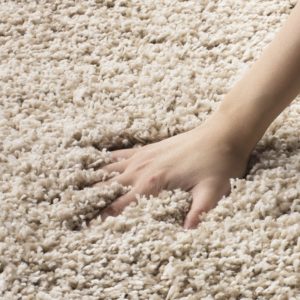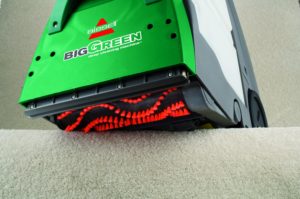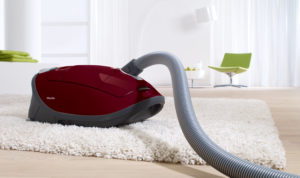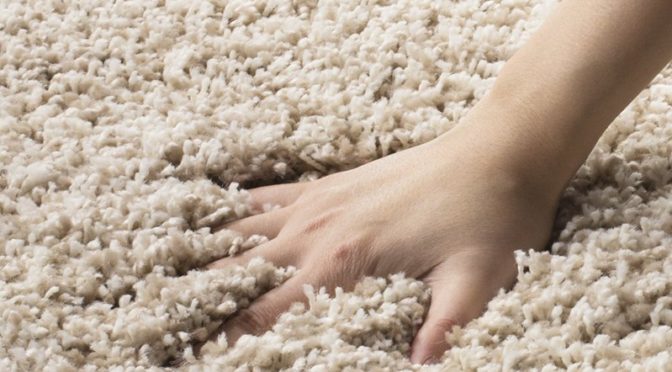
Frieze carpeting, which is also known as twist-style carpeting, is one of the most popular styles of carpets sold today. If it looks familiar, it’s because it is–frieze is basically a spiritual descendant of shag carpet, the kind that ruled homes and far too many RVs back in the 1960s and 1970s. However, shag and frieze aren’t the same, despite similarities in look and feel. And perhaps most importantly, for those of you who remember your parents raking carpets in your childhood, there’s no need to rake frieze carpets! Today we’ll take a closer look at frieze and examine its pros, cons, and how to effectively care for it.
What makes frieze different from shag and other carpet styles?
The defining characteristic of frieze carpets is a high level of fiber twist paired with long fibers. There are many styles of frieze with enough twist in the fibers that the fibers develop a curl, much in the way that you’d curl hair after twisting it between your fingers. However, this isn’t a necessary component of frieze.
Compared to traditional shag carpets, frieze carpet fibers are usually made from thinner fiber strands, lending friezes a thinner, slimmer appearance than the bulky, heavy look of shag. Compared to saxony or trackless carpets, frieze will typically be longer and less dense.
What are the pros of frieze carpets?
The primary advantage of frieze carpeting is undoubtedly its durability. It’s one of the most durable mid-range carpets, and this comes from its high twist. Carpets strands are stronger sideways instead of at their ends. Straight fibers are squashed when stepped on repeatedly through foot traffic, and blooming, where fibers untwist at their tips, also occurs over time. However, with frieze carpets, which are long enough to cascade sideways due to gravity, they take impacts along their side lengths, which are much stronger. Blooming can’t occur and the carpets can last for decades–much like the shags of the sixties and seventies!
Beyond durability, frieze carpets are typically soft, easy to walk on, and fun to spend time together on due to the fluffy, all-encompassing feel of the long and loose fibers. Frieze carpets also hide seams well due to the length of the fibers. When you install carpet in a room wider than the carpet’s width, you’re going to need a seam. Since standard carpet widths are typically 12-15 feet, this can occur in larger houses or those with more open floor plans. Seams can often look like sharp lines through your carpet. However, friezes, with their long fibers, seam cleanly and invisibly, making it easy to stitch together carpets.
The durability of frieze carpets also makes them good fits for stairs and other high traffic areas. The fibers hide dirt well, making them a good fit for people with pets and young children. And the long fibers are great for hiding footprints and vacuum marks.
What disadvantages are there to using frieze?
If the main pro of frieze lies in its durability, the biggest con is definitely how difficult they can be to clean. Carpets with short and tight piles hold spills at their tips, making it easy to clean and remove a range of stains (e.g., from wine, coffee, orange juice, cat and dog pee…). However, frieze carpets, with their long and loose fibers, tend to spread spills throughout the interior of the carpet, meaning you’re going to need to get to them quickly to avoid them from setting in.
When buying frieze carpets, look for good stain resistance as well as detailed stain and soil warranties before buying if possible. If you can buy a solution-dyed fiber, you’ll have additional stain resistance, as such fibers have colors added to them as they’re made instead of after they’ve already been manufactured.
Which rooms in a home are best for frieze?
Frieze carpets are flexible enough to work in a range of home environments. They’re most commonly seen in family rooms, bedrooms, halls, stairs, and basements. They have a casual, relaxed, and inviting look, which encourages children, pets, and adults alike to sit, stretch, and lie down while spending time together. Because of the design and durability of frieze, you can use it in high-traffic areas without fear, and it’ll stay in good condition for as long as you own your home if you clean it well.
Which carpet cleaners and vacuums work best with frieze carpets?

Unlike many carpets, frieze carpets can be challenging to clean due to the free-flowing nature of the long and loose fibers. Many vacuum cleaners simply get stuck or tangled when cleaning frieze carpets, resulting in either damage to the carpeting as fibers are pulled loose, damage to the vacuum as the fibers wrap themselves around brush heads, or in the worst cases, to both. We recommend heavy duty carpet and vacuum cleaners, as a result, in order to both effectively clean frieze and to protect the machines themselves as well as the carpets.

For carpet cleaners, that means the Bissell 86T3 Big Green, which we’ve repeatedly reviewed and found to be the best carpet cleaner under $1,000. For vacuuming, you’ll want the Miele Complete C3 Soft Carpet. Unlike many vacuums, including the Soniclean Soft Carpet, it won’t get stuck on friezes and has the durability to clean for decades.
![]() You can buy the Bissell 85T3 Big Green carpet cleaner here on Amazon. You can buy the Miele Complete C3 Soft Carpet here.
You can buy the Bissell 85T3 Big Green carpet cleaner here on Amazon. You can buy the Miele Complete C3 Soft Carpet here.
![]() Canadians can buy the Miele Soft Carpet here and the Bissell Big Green here.
Canadians can buy the Miele Soft Carpet here and the Bissell Big Green here.
 If you find our research on PMC helpful, you can follow our efforts to keep maniacally reviewing home cleaning tools by shopping through our links above. We promise to keep fighting the good fight against every horror children, animals, and grown, yet messy humans can inflict upon a clean home.
If you find our research on PMC helpful, you can follow our efforts to keep maniacally reviewing home cleaning tools by shopping through our links above. We promise to keep fighting the good fight against every horror children, animals, and grown, yet messy humans can inflict upon a clean home.

